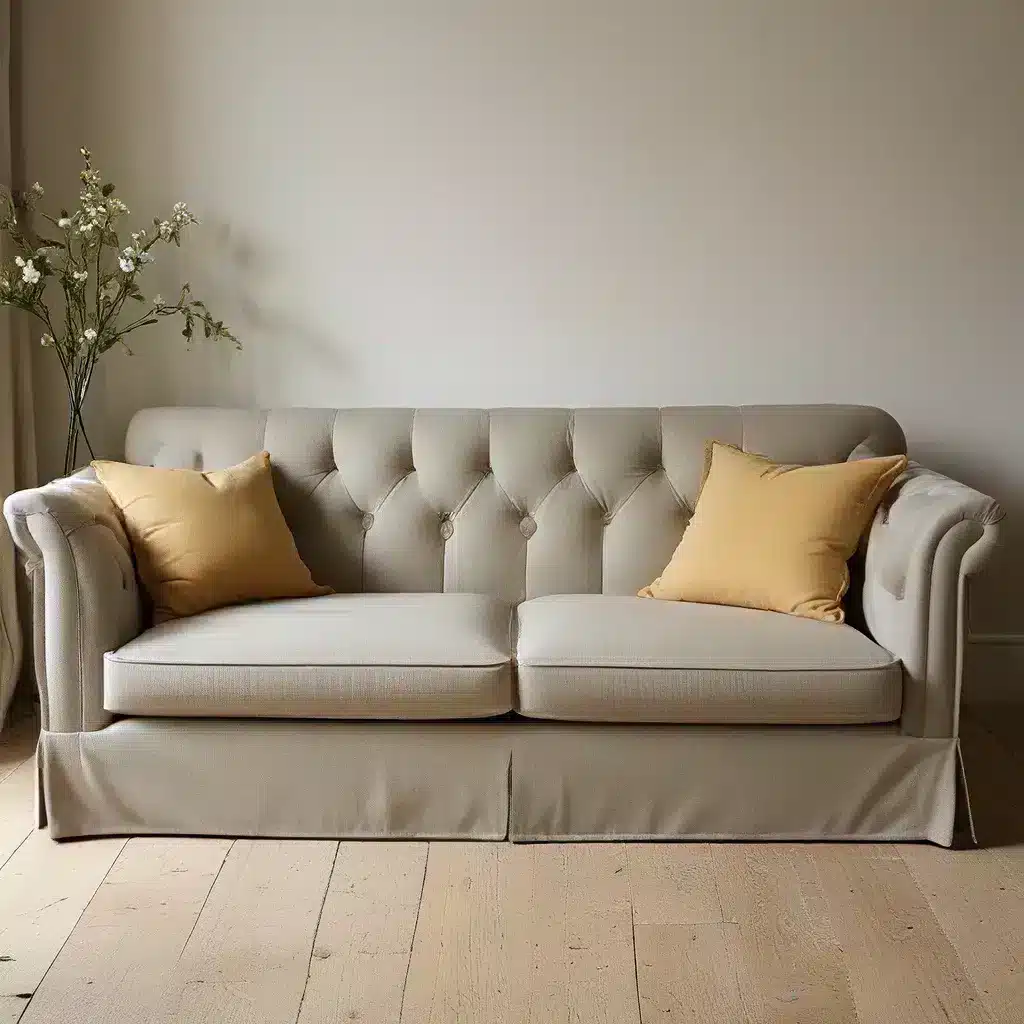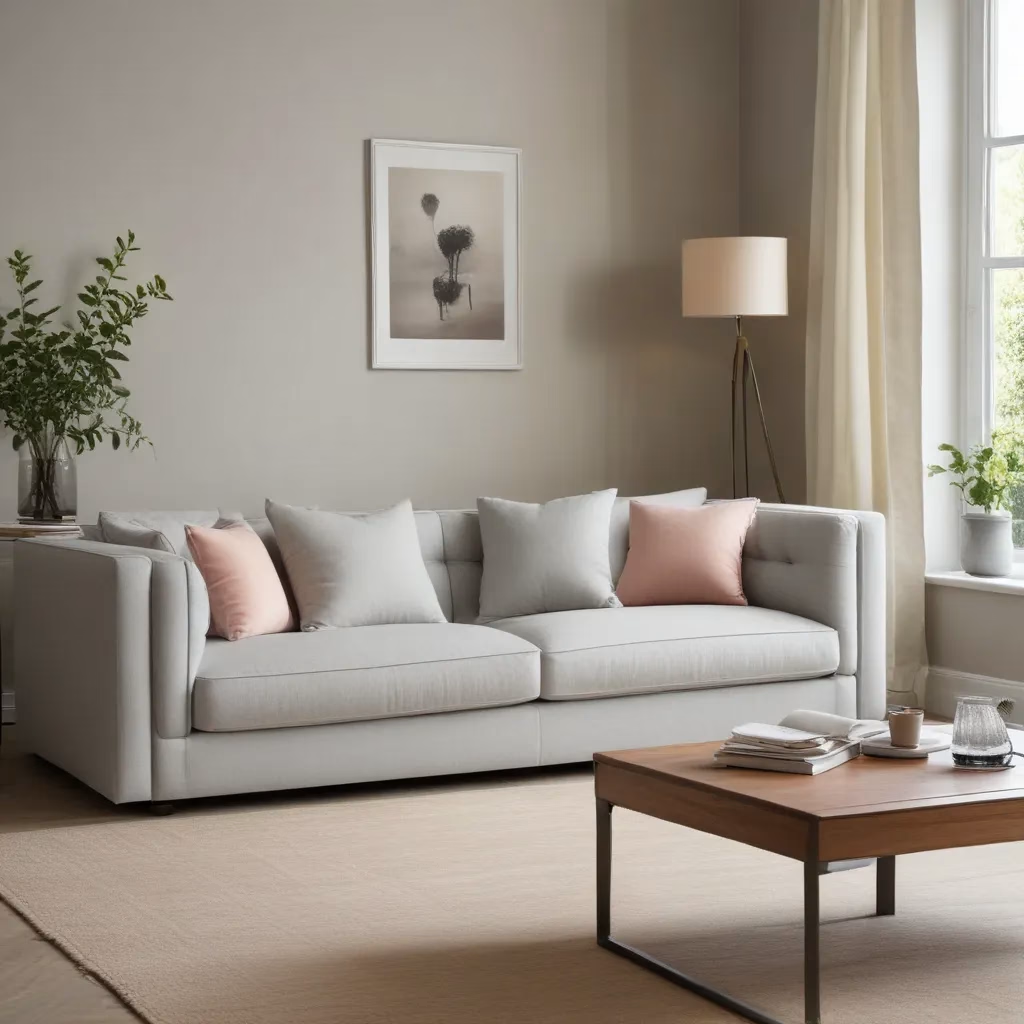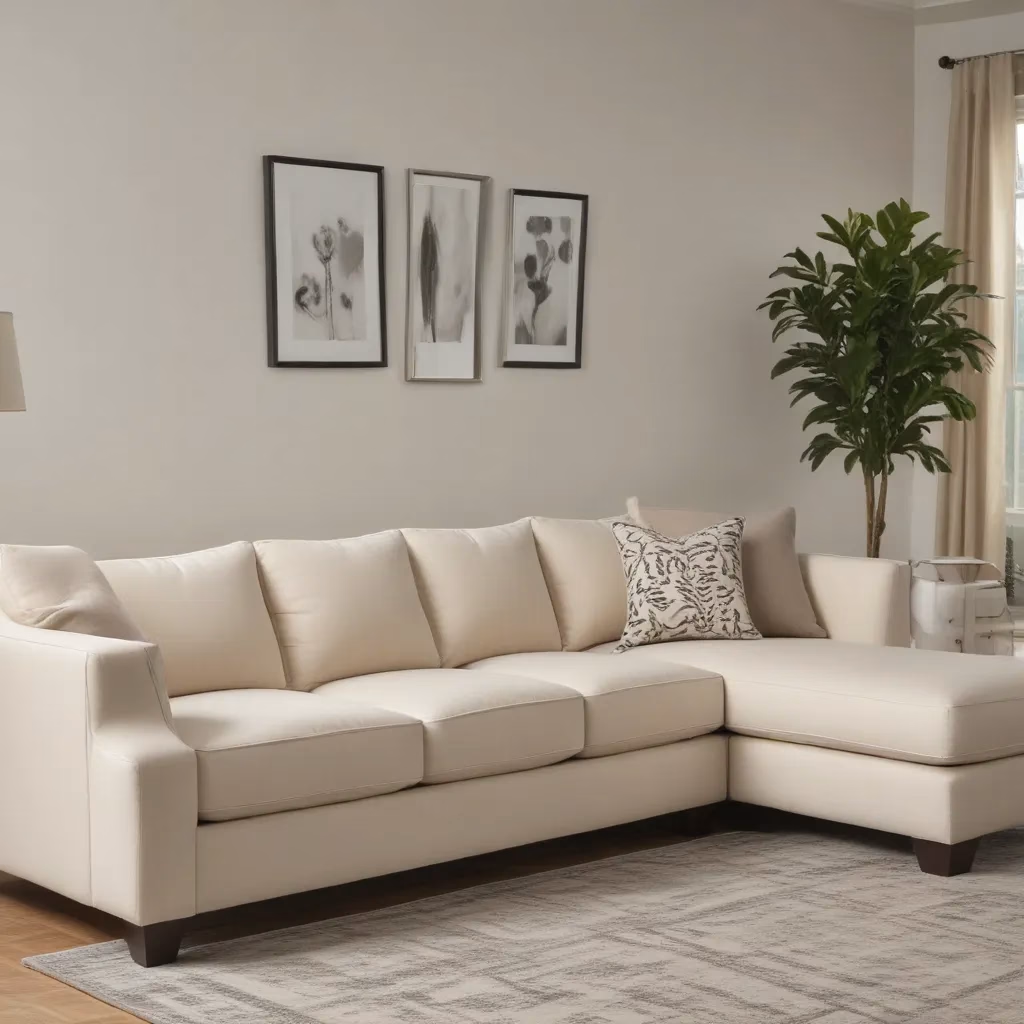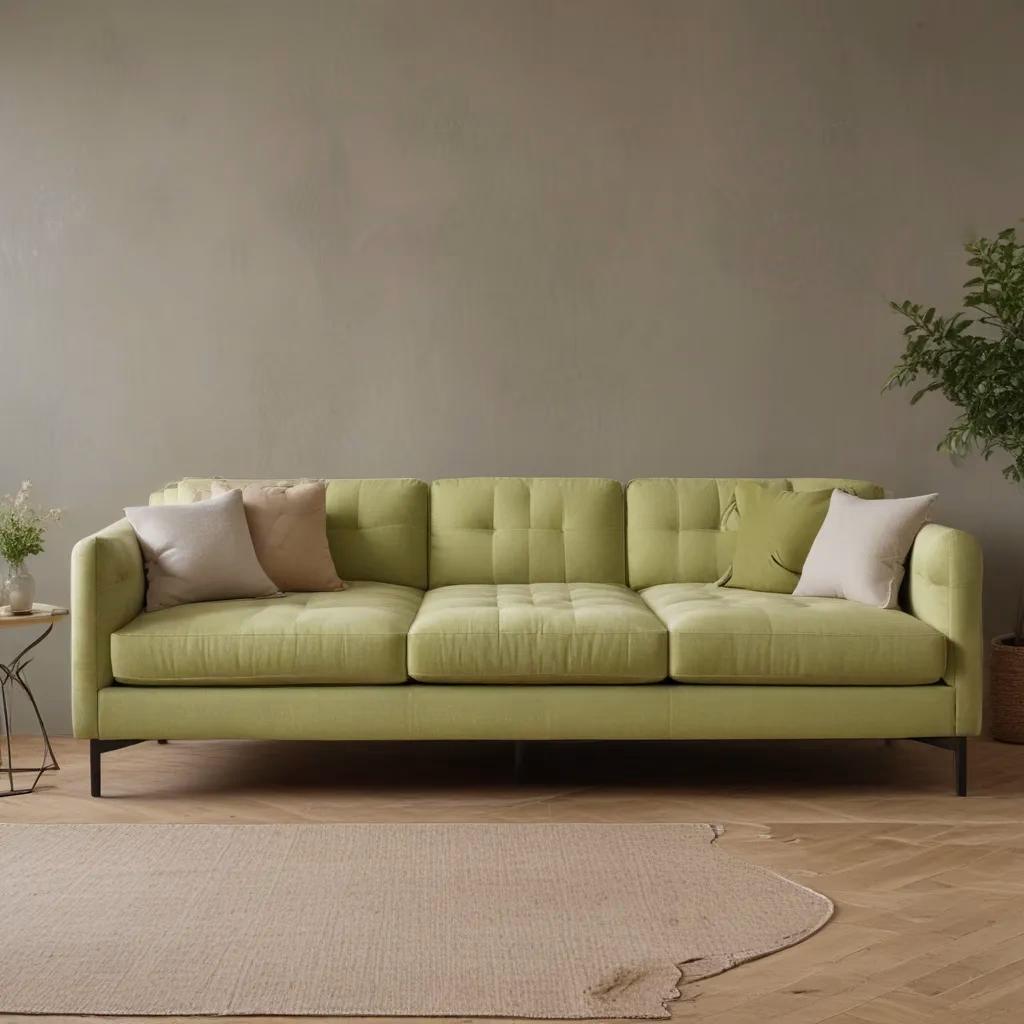
As a self-proclaimed furniture enthusiast and a proud new homeowner, I’ve had the pleasure of embarking on a fascinating journey – creating my very own custom sofa. It all started when I moved into a larger place and realized I needed to furnish it from scratch. Browsing through stores, both online and offline, I was struck by the sheer range of prices, from £600 to £2,000, and the designs that truly captured my interest often came with a hefty price tag of £1,000 or more.
That’s when a lightbulb moment struck – why not make my own sofa? As I delved into researching the process, I was surprised to find that there weren’t many comprehensive resources out there sharing the hows and whys of sofa-making. But undeterred, I dove headfirst into the world of furniture craftsmanship, determined to uncover the secrets behind creating a comfortable and stylish piece that would be uniquely my own.
Traditional vs. Modern Sofa Designs
Before we get into the nitty-gritty of the construction process, it’s important to understand the two main approaches to sofa design – the traditional and the modern. Traditional sofas are often characterized by their intricate, flower-patterned upholstery and carved wooden frames, harking back to vintage styles. These designs typically have the cushions built directly into the fabric, with the springs attached to the bottom of the frame.
The downside of this traditional approach is that if the cushion or fabric were to break, the entire sofa would likely need to be redone, requiring specialized upholstery skills and tools. In contrast, the modern sofa design separates the springs from the cushions, allowing for more modular and customizable elements. These sleek, clean-cut pieces are the ones that typically come to mind when we think of the quintessential sofa in a modern home.
For the sake of simplicity and my own skill level, I opted to go with a contemporary, modular sofa design. This would not only be easier to construct but also offer the flexibility to replace individual components as needed, rather than rebuilding the entire piece.
The Sofa’s Inner Workings
Underneath the cushions, the sofa’s support system is crucial in ensuring a comfortable and durable seating experience. There are two main approaches – webbing and springs.
Webbing is the most cost-effective option, involving the weaving of 2-3 semi-elastic bands across a frame. While this method doesn’t squeak like springs can when they become misaligned, it’s generally considered a lower-quality and less supportive solution, especially for high-traffic or heavy-use sofas.
The spring system, on the other hand, offers a more robust and long-lasting support. There are two types of springs commonly used:
-
S-Springs or sinuous springs: These are the more affordable option, consisting of wavy, heavy-gauge steel that lines the underside of the sofa.
-
Eight-Way Tied Springs: This premium method involves coiled springs evenly spaced at the base of the sofa, tied together with high-quality twine in eight different directions. This allows the springs to distribute weight evenly, providing exceptional comfort and durability – but at a significantly higher cost.
For my project, I opted for the webbing method, as I didn’t anticipate the sofa experiencing intense or frequent use. However, if you’re planning on having a heavily-trafficked sofa, with kids or adults alike jumping on it, the spring-based system would be a wiser choice.
Sizing Up the Sofa
When it comes to the dimensions of a standard sofa, there are a few general guidelines to keep in mind:
- Length: The typical three-seat sofa is around 85 inches long, with a maximum recommended length of 85 inches to make it easier to navigate through doorways and around tight corners.
- Depth: The depth of a sofa usually falls between 30-35 inches, providing a comfortable and supportive seating area.
- Height: The overall height of a sofa typically ranges from 30-36 inches, with the seat height itself being 18 inches from the floor on average.
These measurements can be adjusted based on personal preference and the desired style, but they serve as a solid starting point for planning your custom sofa.
Choosing the Right Fabric and Cushions
When it comes to the fabric for your sofa, the options are endless. I opted for a microfiber material, which is both affordable and relatively thin, making it easier to work with using a standard sewing machine. The upholstery fabric is typically thicker than regular fabric, so make sure to use the appropriate needle to power through the layers.
As for the cushions, I ordered a set of six foam cushions – three for the seats and three for the backs. To ensure a snug fit, I made the seat cushions slightly larger than the covers, compressing them with a vacuum sealer before inserting them. This helped the foam fill out the covers without any unsightly bowing or gaps.
Designing the Perfect Sofa
With the technical aspects covered, it was time to design the sofa of my dreams. I scoured the internet for inspiration, drawing sketches and playing with different configurations until I landed on a contemporary, modular design that would suit my space and personal style.
One key feature I wanted to incorporate was a USB port, so I could conveniently charge my devices while lounging. I also prioritized a clean, geometric look over intricate curves, as I lacked the specialized tools and skills required for extensive woodworking.
After several iterations and careful measurements, I settled on a design that not only looked visually appealing but also allowed for easy transportation and assembly – a crucial consideration for a DIY project of this scale.
The Construction Process
Armed with my detailed plans, a comprehensive list of tools and materials, and a healthy dose of determination, I set out to bring my custom sofa to life.
The first step was to cut the wooden boards to size, meticulously measuring and double-checking each piece to ensure a perfect fit. For the base, I opted for traditional mortise and tenon joints, which, while more time-consuming, result in an incredibly sturdy and reliable structure.
For the rest of the frame, I turned to pocket screws to seamlessly join the components and keep the screws hidden from view. While not as strong as the mortise and tenon joints, the pocket screws proved to be more than adequate for the task at hand.
Next, I tackled the webbing, carefully stapling one end and then using a specialized stretching tool to ensure a tight, drum-like tension across the frame. This process took some elbow grease, but the resulting support system provided a solid foundation for the cushions.
Speaking of cushions, I sewed the covers myself, carefully measuring and cutting the microfiber fabric to the precise dimensions. Inserting the pre-compressed foam inserts was a delicate dance, but the end result was a set of plush, tailored cushions that fit the frame perfectly.
Finally, I stained and sealed the wooden frame, giving it a clean, polished look that complemented the contemporary styling. A few accent pillows in shades of blue completed the transformation, tying the whole piece together seamlessly.
The Rewards of DIY
As I step back and admire the finished product, I can’t help but feel a profound sense of pride and accomplishment. Creating a custom sofa from scratch was no easy feat, but the journey was incredibly rewarding.
Not only do I now have a one-of-a-kind piece of furniture that perfectly suits my taste and living space, but I’ve also gained a newfound appreciation for the craftsmanship and attention to detail that goes into producing high-quality sofas.
While the cost of materials and tools may have been comparable to purchasing a ready-made sofa, the satisfaction of designing and building it myself is truly priceless. I’ve also developed a newfound set of skills, from woodworking and upholstery to sewing and problem-solving, that I can now apply to future projects.
So, if you’re considering taking on a similar DIY sofa challenge, I say go for it! It may take time, patience, and a bit of trial and error, but the end result will be a bespoke piece of furniture that you can truly call your own. And who knows, you might even catch the furniture-making bug, like I did, and find yourself dreaming up your next custom creation.
In the meantime, if you’re in the market for a high-quality, made-to-order sofa that fits your unique needs and style, be sure to check out Sofa Spectacular’s selection. Their team of skilled craftsmen can work with you to design and build the perfect piece for your home. Happy sofa hunting!



